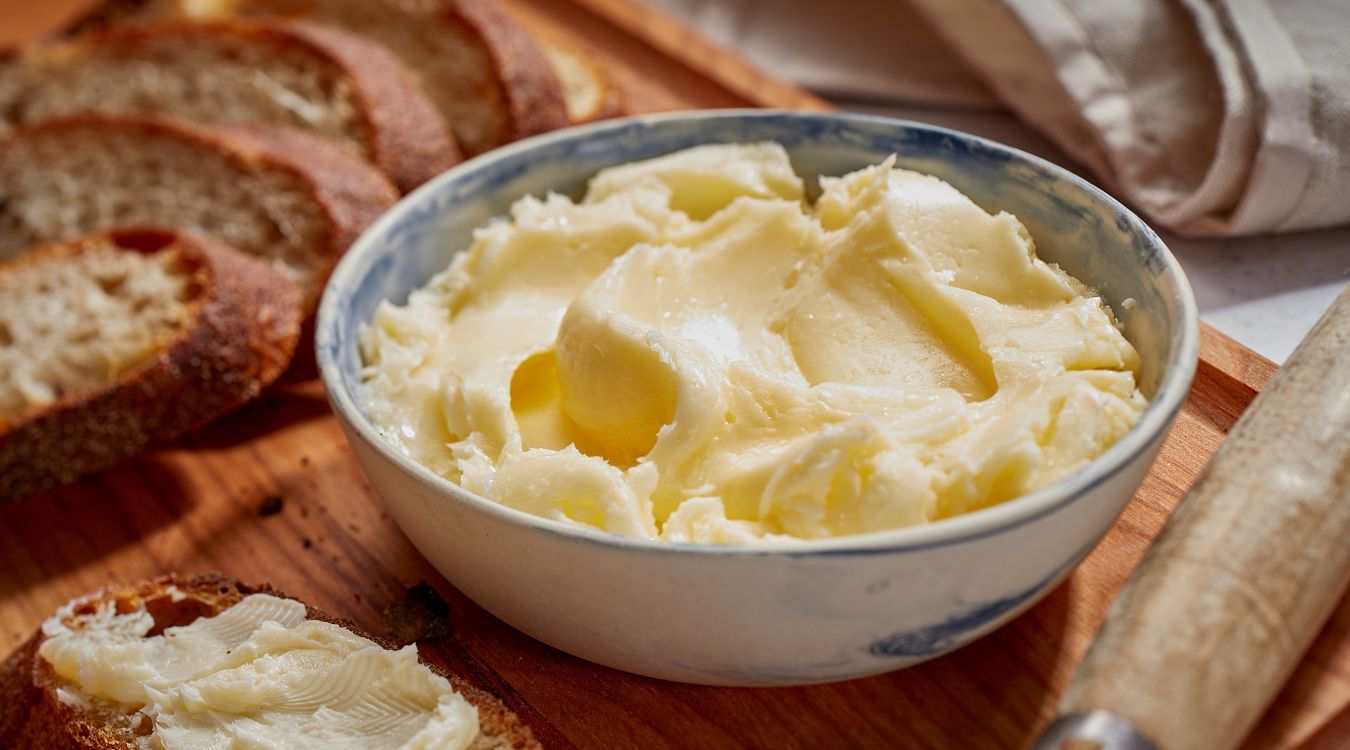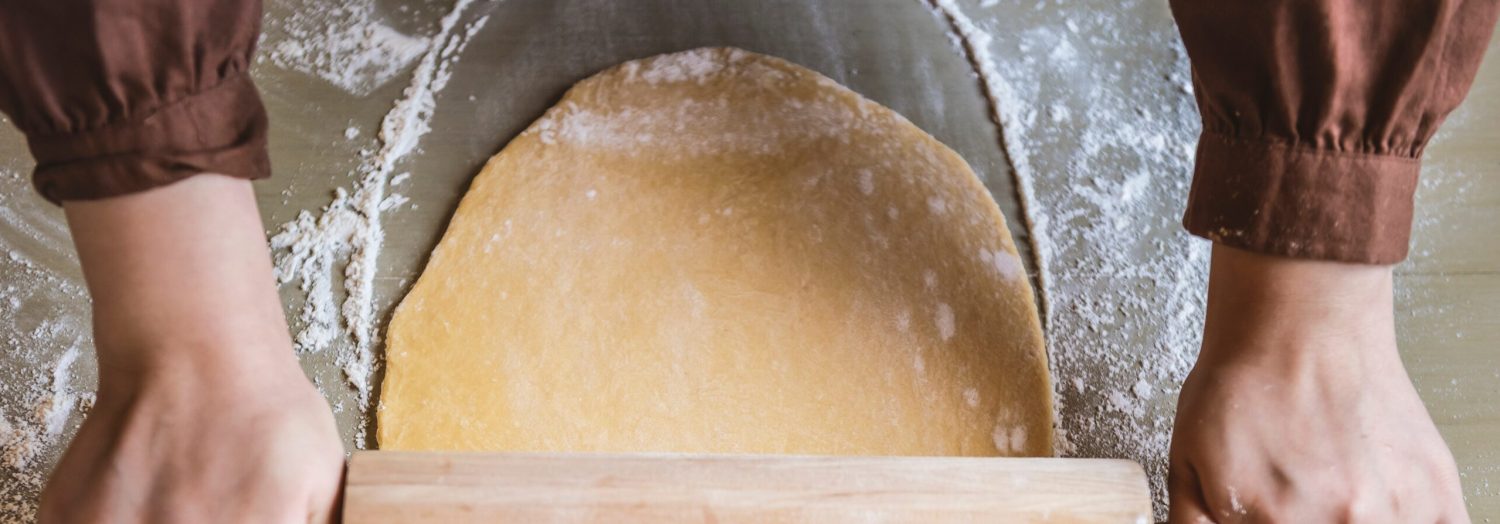Making your own butter at home is a rewarding and straightforward process. With just a few simple steps, you can transform heavy cream into fresh, creamy butter that tastes far superior to store-bought varieties. Plus, you'll also get buttermilk as a byproduct, perfect for baking or cooking.
The main ingredient for this recipe is heavy cream. It's important to use cold heavy cream to ensure the best results. If you don't usually have heavy cream at home, you can find it in the dairy section of your supermarket. The optional salt can be any type of fine salt you prefer.

Ingredients for Butter Recipe
Heavy cream: The base ingredient for making butter. It should be cold to separate properly.
Salt: Optional, but adds flavor to the butter. Use fine salt for best results.
Technique Tip for This Recipe
When making homemade butter, it's crucial to use cold heavy cream to ensure the fat separates properly. Mixing on medium speed helps achieve the right consistency without overworking the cream. Strain the buttermilk thoroughly and rinse the butter with cold water to remove any residual buttermilk, which can cause the butter to spoil faster. Kneading the butter is essential to expel any remaining buttermilk, ensuring a longer shelf life. Adding a pinch of salt can enhance the flavor, but it's optional based on your preference. Store the finished butter in the fridge to keep it fresh.
Suggested Side Dishes
Alternative Ingredients
cold heavy cream - Substitute with coconut cream: Coconut cream has a similar fat content and consistency, making it a good dairy-free alternative.
cold heavy cream - Substitute with cashew cream: Cashew cream can be made by blending soaked cashews with water, providing a creamy texture suitable for those avoiding dairy.
cold heavy cream - Substitute with Greek yogurt: Greek yogurt can be used for a tangy, lower-fat option, though it may alter the flavor slightly.
optional salt - Substitute with sea salt: Sea salt can provide a similar flavor enhancement with potentially more trace minerals.
optional salt - Substitute with kosher salt: Kosher salt is less dense than table salt, offering a milder saltiness and easier control over seasoning.
Other Alternative Recipes
How to Store or Freeze This Dish
- Once you've crafted your homemade butter, place it in an airtight container. This ensures it remains fresh and free from absorbing any unwanted odors from other foods in your fridge.
- For short-term storage, keep the butter in the refrigerator. It will stay fresh for up to two weeks, making it perfect for spreading on your morning toast or melting over steamed vegetables.
- If you want to preserve your butter for a longer period, consider freezing it. Divide the butter into smaller portions, such as tablespoon-sized pats or half-cup blocks. This makes it easier to thaw only what you need.
- Wrap each portion tightly in plastic wrap or parchment paper. This extra layer of protection helps prevent freezer burn and maintains the butter's creamy texture.
- Place the wrapped portions in a freezer-safe bag or container. Label it with the date, so you know when it was made. Frozen butter can last up to six months, ensuring you always have a supply on hand for your baking and cooking needs.
- When you're ready to use the frozen butter, transfer the desired amount to the refrigerator to thaw overnight. This gradual thawing process helps maintain its consistency and flavor.
- If you're in a hurry, you can also grate the frozen butter directly into your recipes. This works particularly well for pastry dough or biscuits, where cold butter is essential for achieving a flaky texture.
- Remember, homemade butter doesn't contain preservatives like store-bought versions, so always check for any signs of spoilage before use. If it smells off or has an unusual texture, it's best to discard it and make a fresh batch.
How to Reheat Leftovers
- Gently melt the butter in a saucepan over low heat, stirring occasionally to ensure even heating.
- Place the butter in a microwave-safe dish and cover it with a microwave-safe lid or plastic wrap. Heat on low power in 10-second intervals, stirring in between, until fully melted.
- If you have a double boiler, use it to reheat the butter slowly. Place the butter in the top part of the double boiler and heat over simmering water, stirring occasionally.
- For a more controlled reheating, use a sous-vide method. Seal the butter in a vacuum-sealed bag and immerse it in a water bath set to a low temperature, around 90°F (32°C), until melted.
- If you prefer a more rustic approach, place the butter in a heatproof bowl and set it over a pot of simmering water, creating a makeshift double boiler. Stir occasionally until melted.
Best Tools for This Recipe
Mixer: Used to mix the heavy cream until it separates into butter and buttermilk.
Strainer: Helps to strain the buttermilk from the butter.
Cold water: Used to rinse the butter and remove any remaining buttermilk.
Spatula: Useful for scraping down the sides of the mixer and kneading the butter.
Bowl: To collect the buttermilk after straining.
Storage container: For storing the finished butter in the fridge.
Measuring cups: To measure the heavy cream accurately.
Salt: Optional ingredient to add flavor to the butter.
How to Save Time on This Recipe
Use a food processor: Speed up the process by using a food processor to mix the heavy cream until it separates into butter and buttermilk.
Chill your tools: Keep your mixing bowl and beaters in the fridge before starting to ensure the cream stays cold, which helps it separate faster.
Batch process: Make larger batches of butter at once and store in the freezer to save time on future preparations.
Pre-measure ingredients: Have your heavy cream and salt pre-measured to streamline the process.

Butter Recipe
Ingredients
Main Ingredients
- 2 cups Heavy Cream cold
- ¼ teaspoon Salt optional
Instructions
- 1. Pour the heavy cream into the mixer.
- 2. Mix on medium speed until the cream separates into butter and buttermilk.
- 3. Strain the buttermilk and rinse the butter with cold water.
- 4. Knead the butter to remove any remaining buttermilk.
- 5. Add salt if desired and store in the fridge.
Nutritional Value
Keywords
More Amazing Recipes to Try 🙂
- Vegan Black Bean Burger Soup Recipe45 Minutes
- Manhattan Clam Chowder Recipe1 Hours
- Vegan Tropical Smoothie Recipe10 Minutes
- Vegan Stuffing Recipe1 Hours
- Vegan Stir-Fry Recipe30 Minutes
- Twice Baked Potatoes Recipe1 Hours 30 Minutes
- Vegan Tzatziki Sauce Recipe15 Minutes
- Microwave Corn on the Cob Recipe7 Minutes

Leave a Reply